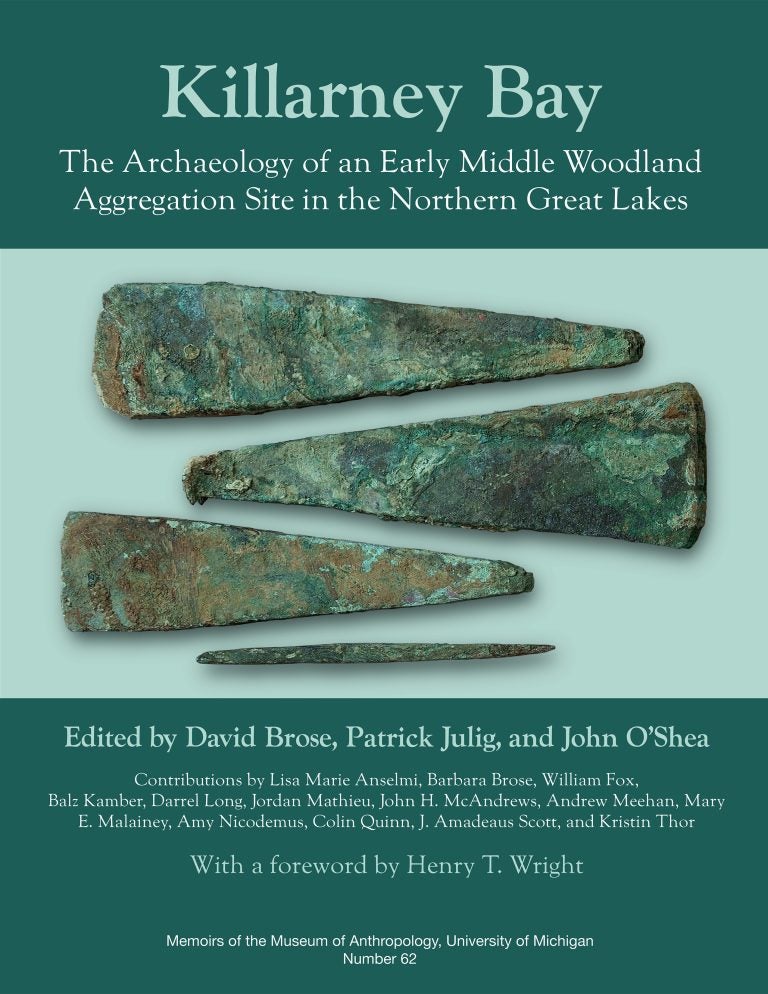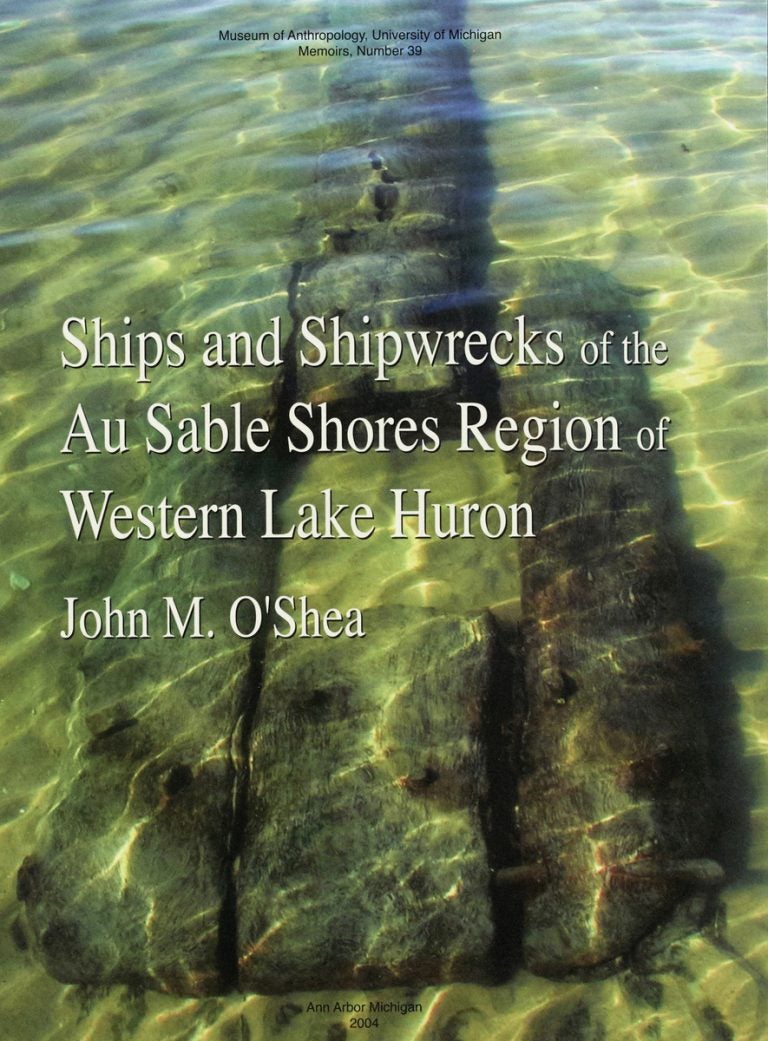In 2022, to celebrate a century of existence, the University of Michigan Museum of Anthropological Archaeology (UMMAA) hosted an international conference to explore possibilities for a middle way: an archaeology for the next 100 years, combining humanistic and scientific approaches, which allows for both agents and systems, description and explanation, science and heritage. This volume is meant to be a snapshot of that conference and this moment in the development of the discipline. Included are most of the papers and posters presented, as well as photographs of the panels and the proceedings.
Category: John M. O’Shea
Killarney Bay: The Archaeology of an Early Middle Woodland Aggregation Site in the Northern Great Lakes
The archaeological site at Killarney Bay, on the northeast side of Georgian Bay in Ontario, Canada, has attracted and mystified archaeologists for decades. The quantities of copper artifacts, exotic cherts, and long-distance trade goods all highlight the importance of the site during its time of occupation. Yet researchers have struggled to date the site or assign it to a particular cultural tradition, since the artifacts and mortuary components do not precisely match those of other sites and assemblages in the Upper Great Lakes. The history of archaeological investigation at Killarney Bay stretches across parts of three centuries and involves field schools from universities in two countries (Laurentian University in Canada and the University of Michigan in the United States). This volume pulls together the results from all prior research at the site and represents the first comprehensive report ever published on the excavations and finds at Killarney Bay. 157 color and b&w photographs and maps and 93 tables.
Caribou Hunting in the Upper Great Lakes: Archaeological, Ethnographic, and Paleoenvironmental Perspectives
Elizabeth Sonnenburg, Ashley K. Lemke, John M. O’Shea
M 57
Bringing together American and Canadian scholars of Great Lakes prehistory to provide a holistic picture of caribou hunters, this volume covers such diverse topics as paleoenvironmental reconstruction, ethnographic surveys of hunting features with Native informants in Canada, and underwater archaeological research, and presents a synthetic model of ancient caribou hunters in the Great Lakes region.
Ships and Shipwrecks of the Au Sable Shores Region of Western Lake Huron
John M. O’Shea
M 39
Focusing on an area of coastline particularly known for vessel strandings, this volume includes histories of more than 50 lost vessels; a description of the remains of vessels and wreckage documented during archaeological research; an analysis of shoreline change in the last 150 years; and a model for matching wreckage to lost ships. This book will be of interest to archaeologists, historians, and anyone who loves the Great Lakes.
The Bridgeport Township Site: Archaeological Investigation at 20SA620, Saginaw County, Michigan
John M. O’Shea and Michael Shott
AP 81
Excavations at the Bridgeport Township site (20SA620) revealed a wealth of information about the Saginaw Valley’s prehistoric inhabitants. For roughly 3,000 years, from about 1500 BC to about AD 1500, people used this site.





